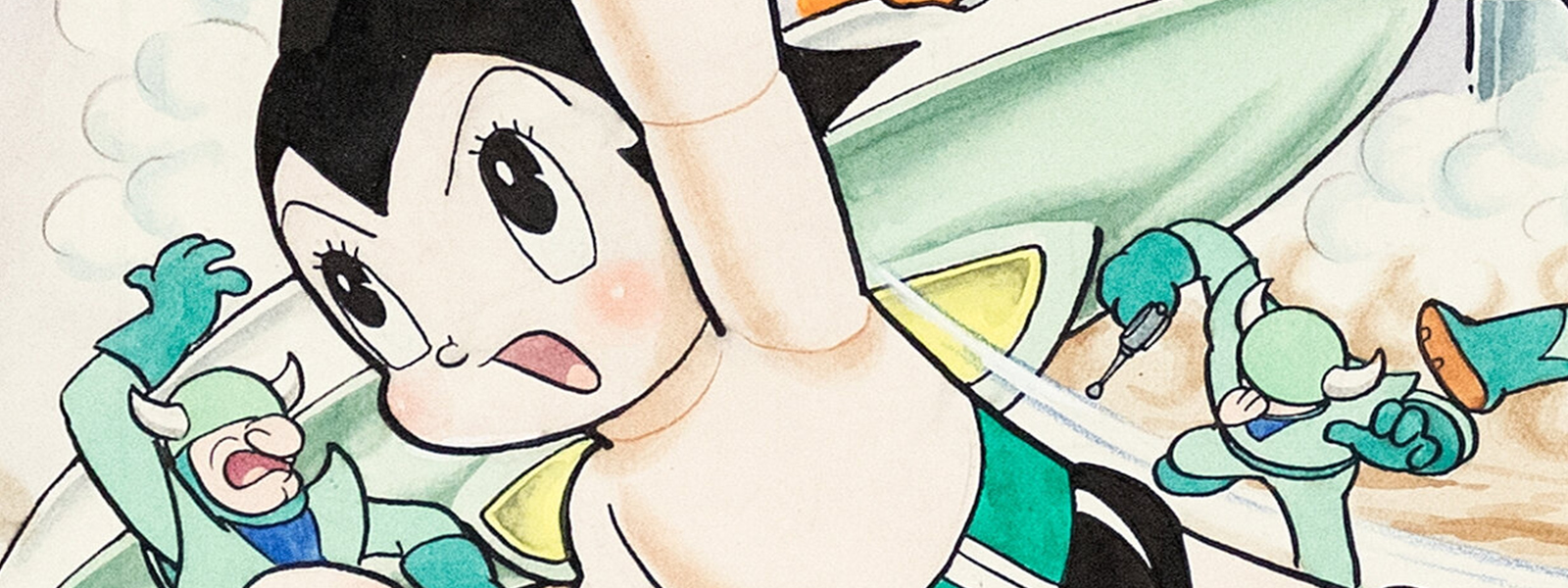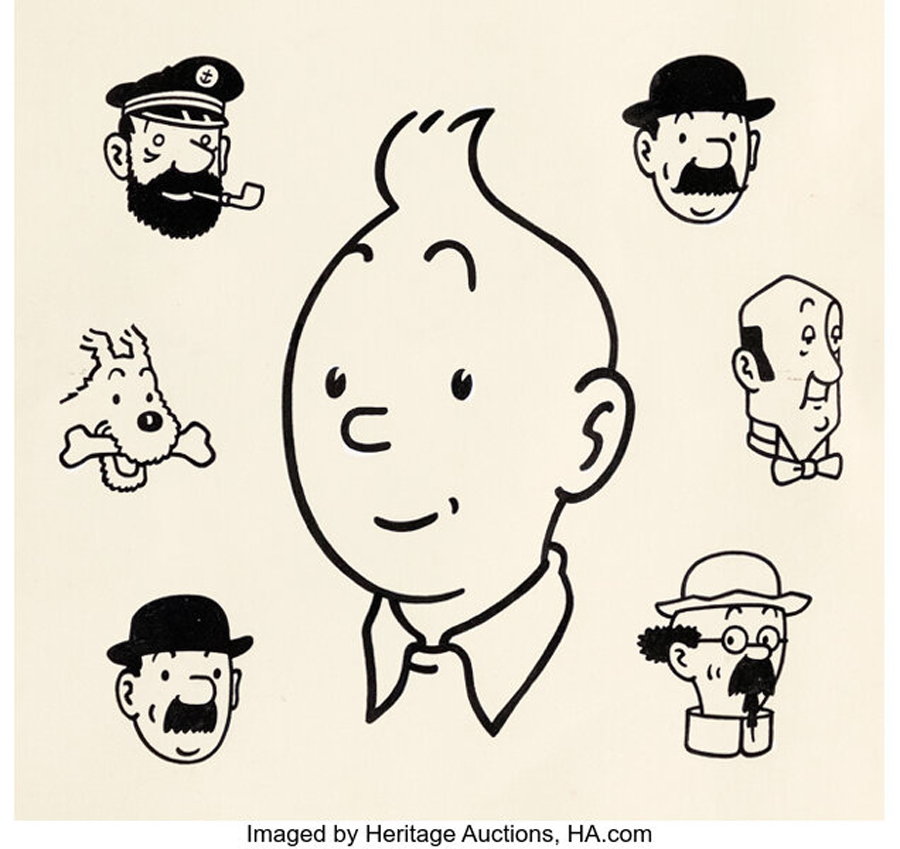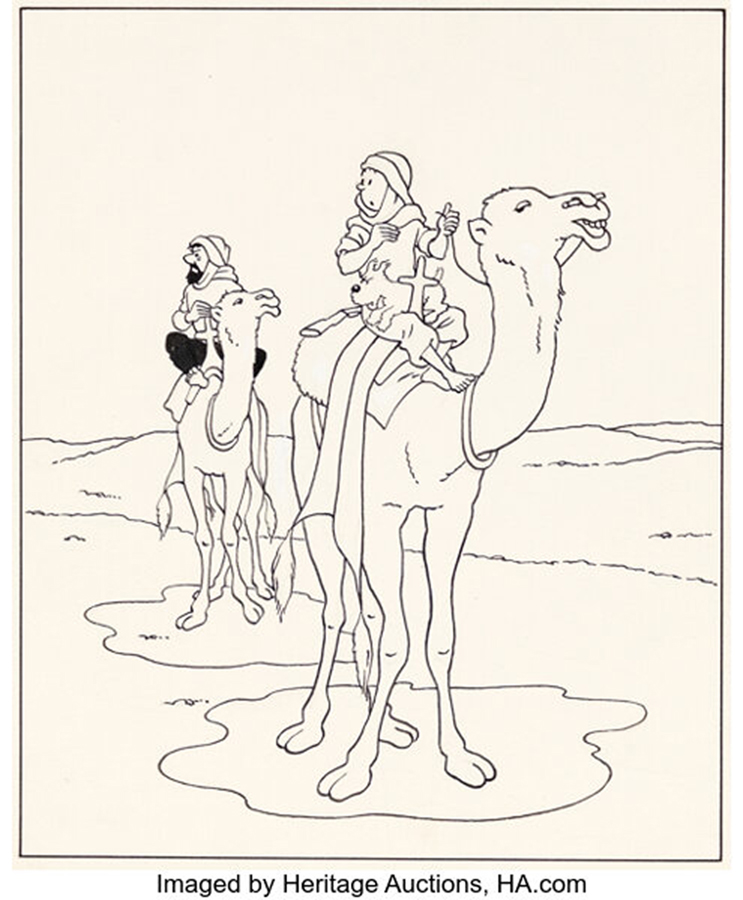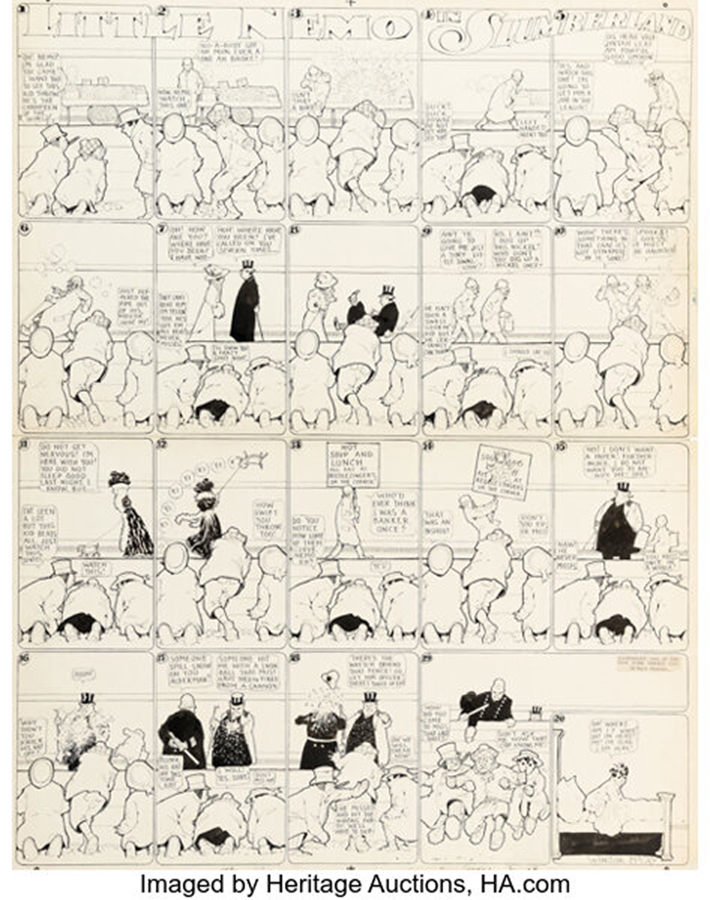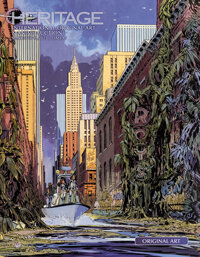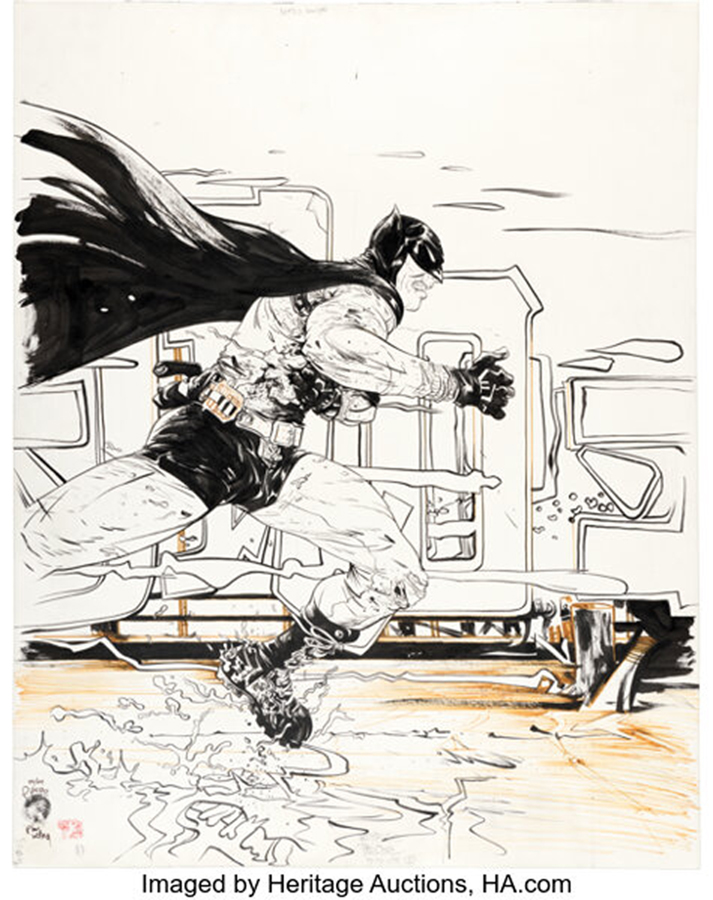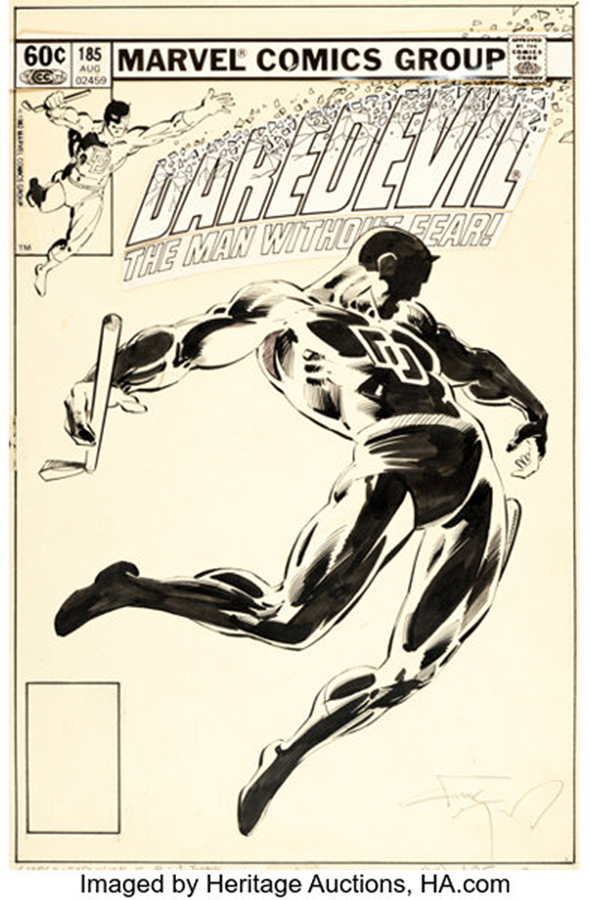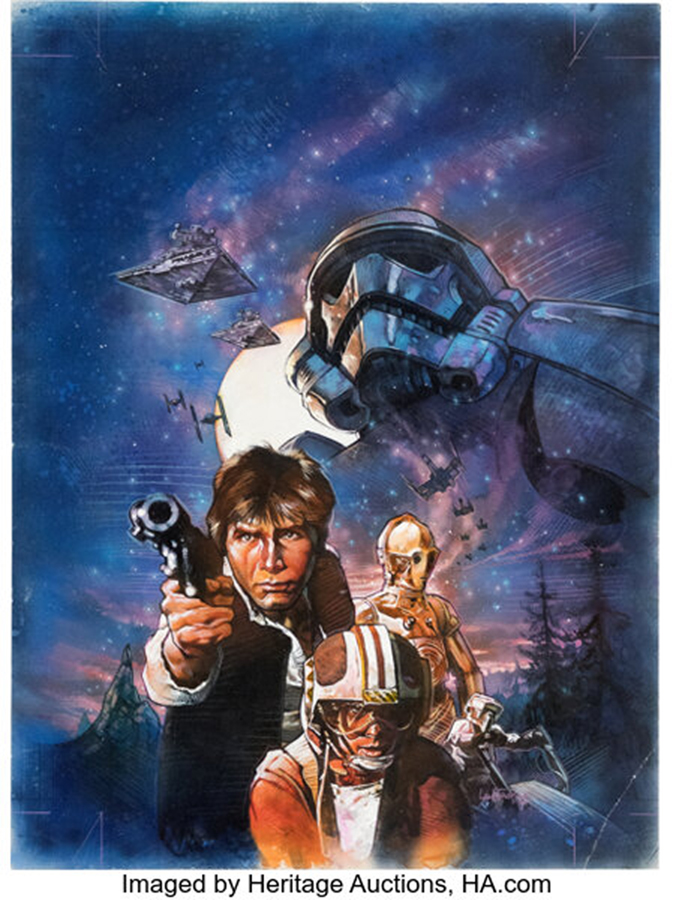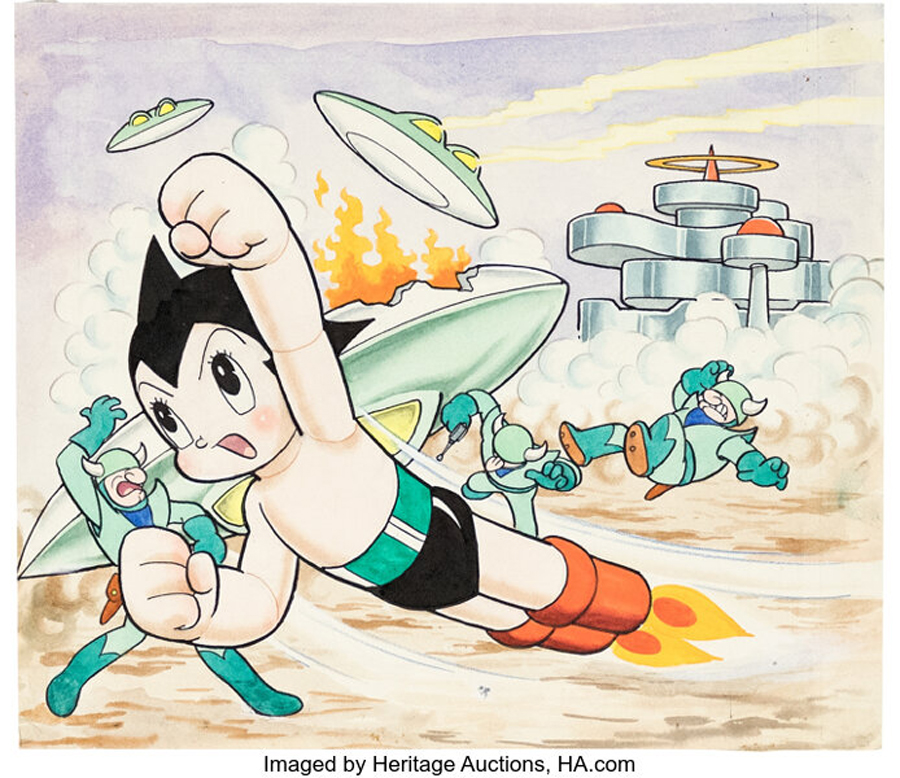EVENT FEATURES A WHO’S WHO OF LEGENDARY COMIC AND ANIME ARTISTS, FROM FRANK MILLER TO HERGÉ TO OSAMU TEZUKA
By Robert Wilonsky
It is only appropriate that Heritage’s March 10-12 International Original Art & Anime Signature® Auction count among its copious highlights two original works featuring comicdom’s oldest and most revered world traveler: Tintin as rendered by his creator, the Belgian artist Hergé. Iconic images of superheroes abound in this event; adored anime creations, too, alongside decades-old comic strips whose makers impacted generations of creators to come. Here you will find something for everyone by everyone from everywhere, including Moebius, Robert Crumb, Juan Giménez, Gil Kane, Bernie Wrightson, Carl Barks, Jack Kirby, Mike Mignola and on and on.
Yet towering above them all is the 94-year-old teenage boy who, The New York Times once noted, is “the antithesis of a superhero” – an orphaned kid reporter-turned-world adventurer with a tuft of upswept hair whose sidekick is a dog named Snowy. Tintin made his debut in 1929 and was born seemingly fully formed: “excessively virtuous, chivalrous, brave, a defender of the weak and oppressed, never looks for trouble but always finds it,” Pierre Assouline wrote in 1996’s biography Herge: The Man Who Created Tintin. And Tintin was forever 15, give or take, which explains why children so adored the hero before, perhaps, moving on to slam-bang stories about men in tights.
Four years after Heritage sold the first published Tintin cover for $1,125,000, the auction house is proud to offer two more great originals, each accompanied by letters of authenticity from the nonprofit Belgium-based Studios Hergé. Both images were used for the popular Tintin coloring books first published by Casterman in the 1960s, which have never gone out of print.
One hails from 1961’s Album à colorier No. 5 and is instantly recognizable to Tintin fans as a modified rendering of the cover to 1941’s collection The Crab with the Golden Claws, among the volumes Steven Spielberg used as inspiration for his 2011 film The Adventures of Tintin. Hergé took the original image featuring Tintin and Captain Haddock and erased a few things – shards of glass from an exploding bottle, bandits just over the dune, the camels’ shadows – to make it easier for children to color the work.
“It’s a real re-composition in the purest style of the ligne claire with, let’s say, a more peaceful atmosphere than the World War II-era original,” says Olivier Delflas, Director of International Comic Art & Anime at Heritage. “Our International Comic Art and Anime auctions now have a Platinum session intended to highlight some 40 exceptional originals from the worlds of U.S., Franco-Belge, international and Japanese comic books and anime. And these two extraordinary Tintin originals belong among their esteemed ranks.”
The second work might even rank among the most coveted Tintin originals to come to auction in years. Tintin is surrounded by the series’ six most important characters, among them Snowy and Haddock; that alone makes it significant, a family portrait rendered in thick lines by the group’s patriarch. But it didn’t only serve as the cover for 1963’s Album à colorier No. 6: This illustration was also used as the front of the commercial brochure used when Little, Brown and Company brought Tintin to U.S. shores in 1974. For many Americans, this image was their introduction to the kid Spielberg eventually fell in love with – despite not understanding a word of his adventures.
Hergé is joined in this auction by venerated comic-strip pioneers Winsor McCay and George Herriman, each represented by their most famous creations – Little Nemo in Slumberland and Krazy Kat, respectively.
The original Little Nemo featured here first ran in The New York Herald on January 24, 1909, about four years after McCay debuted the strip about a little boy whose adventures transpired while he slept. As Coulton Waugh wrote in 1947’s landmark The Comics, McCay’s strip “stemmed from the great tradition of fairy lore and children’s illustrated books, but McCay found in the new technique of sequential pictures, enriched with occasional ‘balloons,’ a release for his own remarkable talents,” which are on full display in this dizzying, joke-filled page in which his constant companion Flip invites him to witness the throwing abilities of a man who (almost) never misses his target.
Says Delflas of this finely detailed masterwork, “This Sunday strip is a real hymn to the immense talent of McCay, who in 20 panels shows us not only the genius of his line but also his narration and humor. It stands out from the crowd.”
So does this Krazy Kat, which first ran on October 16, 1938, when television came to Coconino County, Arizona. The strip itself is quintessential Krazy Kat, which Waugh rightfully deemed “the maddest, merriest of ‘the funnies’” – Krazy getting a brick to the head thanks to Ignatz the mouse, same as it ever was. But this strip isn’t like most of the Herriman originals available at auction: It’s personalized and includes a thank-you to Elmer Raguse, the eight-time Oscar-nominated sound engineer at Hal Roach Studios, and it’s among the rare Herriman-hand-colored originals known to exist.
INTERNATIONAL ORIGINAL ART & ANIME SIGNATURE® AUCTION 7344
March 10-12, 2023
Online: HA.com/7344a
INQUIRIES
Olivier Delflas
OlivierD@HA.com
Speaking of Little Nemo, it should be noted that in 2014, Locust Moon Press published a star-studded tribute to McCay’s creation with the publication of Little Nemo: Dream a Little Dream. Among the contributors to that homage was Paul Pope, the Eisner Award-winning American artist whose work combines “the adventure and action of American comics with the philosophical concerns and nuanced characterization of European comics,” per Publishers Weekly, with a dash of manga’s “visual storytelling techniques.” This makes him perfect for this auction, where he’s represented by the furiously paced first four pages from what’s easily Pope’s most famous work: the first issue of 2006’s Batman: Year 100, an Elseworlds tale set in Gotham City 2039, where Commissioner Gordon’s grandson wants a descendant of Bruce Wayne’s for murdering a federal agent. The four-issue series ranks among the most influential Batman stories since Frank Miller’s first shot at The Dark Knight.
Speaking of: Miller’s represented here by the iconic cover of 1982’s Daredevil No. 185, the first issue where the writer-artist turned over the pencils to Klaus Janson. Miller, who rescued Marvel’s Man Without Fear from the margins, still wrote the story, but he was about to leave the title – for a while at least. This stand-alone image of Daredevil, signed by Miller and Janson and Marvel’s then-editor-in-chief Jim Shooter, remains one of the highlights of that historic run.
Another Marvel-ous offering can be found in this auction: Page 11 from Amazing Spider-Man No. 69, in which John Romita Sr. and Jim Mooney pit the Wall-Crawler against the Kingpin. A slice of gold from the Silver Age.
This Platinum piece is sure to garner collectors’ attention, and not merely because it’s on the cover of the auction catalog: Jean-Claude Mézières’ original cover for the 1976 edition of Valerian, The City of Shifting Waters. As the catalog notes, this is a “wonderful and brutal post-apocalyptic image plunging us into a New York ravaged by an ecological cataclysm,” and it introduced readers to spatiotemporal agents Valérian and Laureline.
Mézières, with co-writer and childhood friend Pierre Christin, was a visionary whose works were rife with “humor, political satire and strong doses of humanism and feminism,” notes the Lambiek Comiclopedia. One can also draw a straight line from this work to Star Wars, which is represented here by:
Mathieu Lauffray’s mixed-media and acrylic cover for 1996’s Star Wars: Heir to the Empire No. 6, the final issue of that limited-run series. There’s already a buzz about this one following October’s $143,750 sale of the first issue’s cover – and that one featured only Luke Skywalker and Admiral Thrawn, making his debut. The finale’s cover is a veritable fever dream for the Star Wars fan, featuring Luke, Han Solo, C-3PO, a looming Stormtrooper and Scout Trooper on Endor.
Another cover makes its auction debut in this event: Vicente Segrelles’ stunning piece from The Mercenary, La Evidencia, among the most famous images in a series published from Germany to the Netherlands to the Czech Republic to Serbia. This oil painting appeared on the cover of Glénat’s Collected Edition No. 3, published in 2022.
Heritage is also thrilled to offer an original illustration of Astro Boy by his creator, Osamu Tezuka. This scene is rendered in kamishibai format, a form of storytelling incorporating Japanese street theater famous in the 1930s. As the catalog notes, “The kamishibai were shown by storytellers who would visit villages and set up a miniature wooden stage, into which they would slide illustrated pictures and embody the different characters of the story they were telling.” This rare work featuring the kid robot is exceedingly rare and exceptional.
And in an auction filled with highlights, here is one that needs only a simple line of introduction from Delflas: “This is the most beautiful production cel from Hayao Miyazaki’s mythical Princess Mononoke we have ever offered.” It speaks, almost shouts, for itself.
 ROBERT WILONSKY is a staff writer at Intelligent Collector.
ROBERT WILONSKY is a staff writer at Intelligent Collector.

